Mala Gallery
8, Zamkowy Sq., Warsaw (Old Town)
January 8 - February 1, 2002
Torsten Warmuth
"Disappearing"
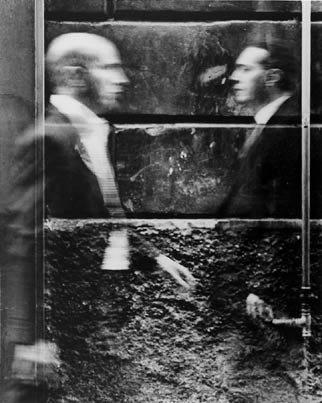

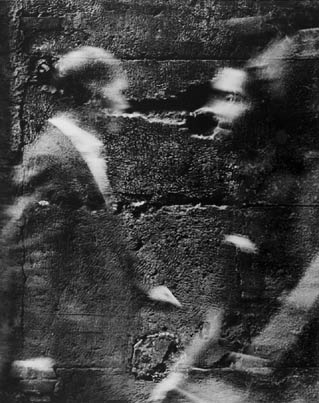
Torsten Warmuth, "Disappearing", Mala Gallery, Warsaw, Poland, January 2002.
Disappearing
We live in extremely eventful times. The course of these everyday events is accelerating. This increase in velocity and dynamic energy meets with direct opposition in Torsten Warmuth's works, for which he photographs people in metropolises and big cities like Berlin, New York or Naples; not people as a sociological phenomenon, but the state of their feelings and their consciousness. His photography, black and white, oriented on fine prints, may be referred to as classical. Its vital qualities develop from the use of multiple exposures and a lack of clear definition in motion. In artistic terms, he consciously takes up the futurist photo-dynamism of the Italian Anton Giulio Bragaglia, who was the first to formulate a visual concept of speed, energy and vitality using photography between 1911 and 1913.
All his series are preceded by exact studies in which the optimal technical parameters for the imagined images are established. In the series stadtwolf, taken in Naples during the autumn of 2000, two people meet in a specific place, although this is in fact fiction; the images were taken at different times. In the series passing, made in New York a year later, Torsten Warmuth not only photographed the women and men after intervals of time, but in different places. Here too, his pictures depict encounters brought about solely by the photographer himself. In both series, only the interpenetration of the images - created by means of multiple exposure, making the corporeal translucent - is a pointer to the fictive. In the case of his motifs of Naples, the phantom encounters were integrated into morbid backgrounds, whilst in the New York pictures, skyscrapers - obstructing everything and every view - left open only corridors and small windows to the sky. The big city atmosphere incarnates a general sense of life; the universal bustle and urban dynamics such as the fleeting, the rapidly passing, something scarcely perceived and already forgotten. The discrepancies which divide us and the unifying aspects both come into view - a visualisation of human nature itself.
By exclusively accelerating the technical and media possibilities of photography, Torsten Warmuth gels the universal mobility of our times - the actual as well as the emotional - into a pictorial form which may be adopted and thus experienced in the long term. But what appears blurred, imprecise and phantom-like in his pictures is not a dismantling of the continuum, but the sum of moments, and therefore a process within which a higher truth is unified. It is a question of slowing down perception, but also of making something visible which would remain invisible without these photographs, for the encounters between people which he shows - as has been said before - never took place, although they could well have taken place in this way. These are the dialectics of his images. On the one hand, they materialise something which usually remains invisible, but they also - by grasping different levels of time and space - depict disappearance.
Enno Kaufhold
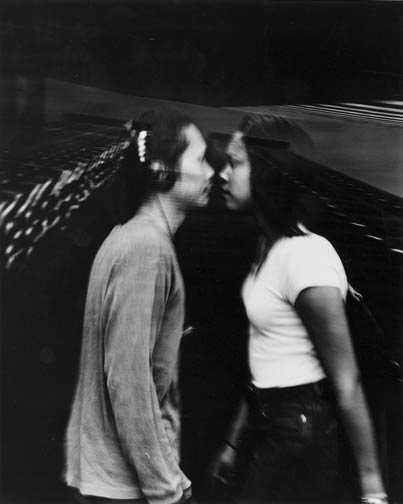
Torsten Warmuth, "Disappearing", Mala Gallery, Warsaw, Poland, January 2002.
Torsten Warmuth
born 3.04.1968, Hildburghausen, Germany
Lives in BerlinIndividual Exhibitions
1995 M(itre, Leipzig
1997 "unter grund", art 5 III Gallery, Berlin
1998 "polaroid studies", Factory Salzmann, Kassel
1998 "new walk", Congress Centre, Kassel
1998 "new walk", Eastside Gallery, Kassel
1999 "new walk". Rh(n-Rennsteig-Sparkasse, Meiningen
2000 "herzbruch und yellow cabs", Gallery Giedre Bartelt, Berlin
2001 "im verschwinden", Gallery Setz & Partner, BerlinGroup Exhibitions - Participation at Art Fairs
1997 art frankfurt, Frankfurt/Main
1997 "innenseite", Kulturfabrik Salzmann, Kassel
1997 "ein teil von mir", Gallery Werksform, Kassel
1999 "der kuss", Kulturbahnhof, Kassel
2001 "positions of color photography", Gallery in KMZA, Berlin
2001 artforum, BerlinCollections
A part of series "new walk" has become property of the DG Bank collection in Frankfurt/Main.
See also:
- Torsten Warmuth Photographie
- Torsten Warmuth: yellow cabs
Positionen der Farbfotografie Abstraktion II
Kunst- und Medienzentrum Adlershof (KMZA), Berlin- Galerie Seitz & Partner
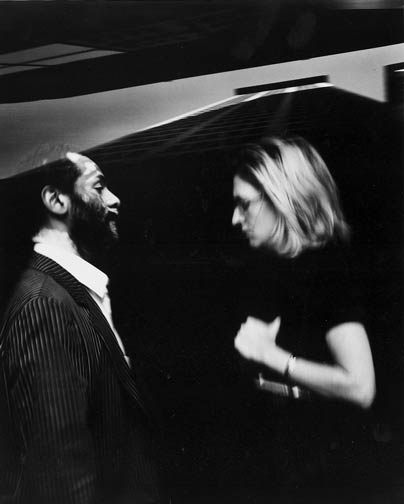
Torsten Warmuth, "Disappearing", Mala Gallery, Warsaw, Poland, January 2002.
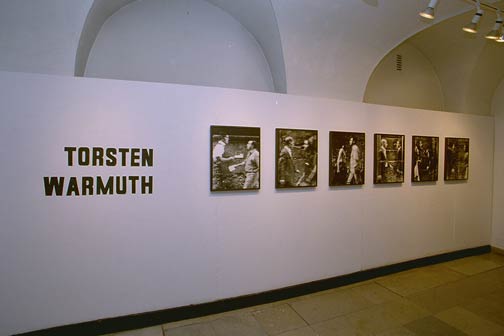

Torsten Warmuth's exhibition "Disappearing" in Mala Gallery, Warsaw. hoto K. Wojciechowski
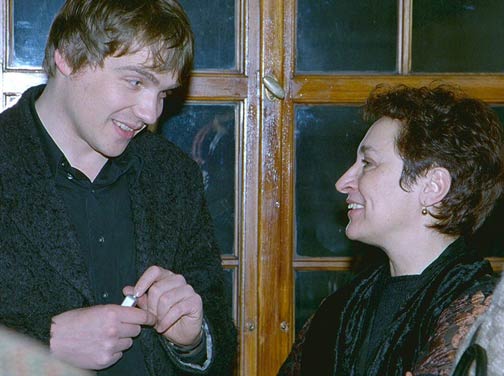
Opening of Torsten Warmuth exihibition in Mala Gallery in Warsaw, Jan. 8th, 2002. The Artist in conversation with Vera Bagalianz, director of Goethe Institut in Warsaw. Goethe Institut was main sposor of Torsten Warmuth's exhibition in Warsaw. Photo K. Wojciechowski
back to FOTOTAPETA's front page
Copyright © 1997-2025 Marek Grygiel / Copyright for www edition © 1997-2025 Zeta-Media Inc.
18 - 01 - 2002